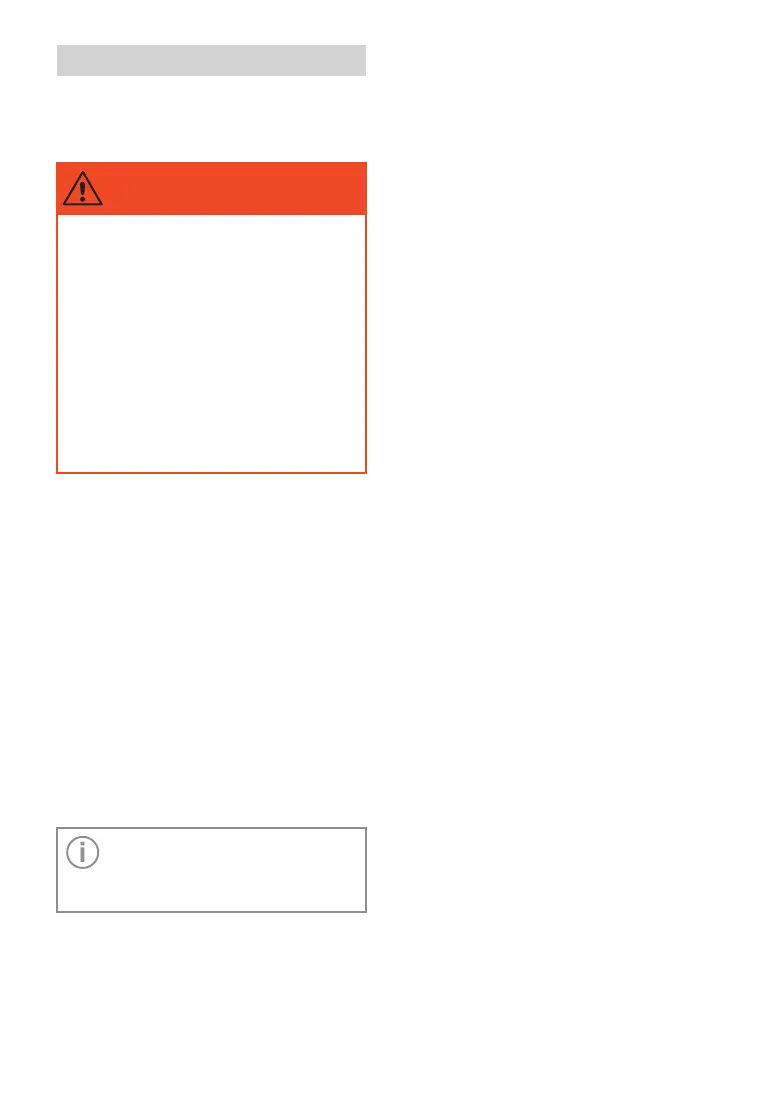168
USE AND HANDLING
5 Use of the e-bike
5.1 Riding
WARNING!
Risk of accident and injury
An activated S-pedelec starts operating
as soon as you put your foot on the pedal!
If you accidentally start the S-pedelec in
this way, the unfamiliar thrust can lead to
falls, hazards or accidents.
• First apply a brake. Then lift one leg
over the S-pedelec while con-
sciously holding the handlebars
with both hands more firmly than
you would on a regular bicycle.
Then sit on the saddle and do not
put your feet on the pedals until you
are ready to ride.
Your e-bike has one of the following pedal
drive types:
• A chain drive.
For more information on the function,
refer to chapter 12.1 “Chain drives”.
• A belt drive.
For more information on the function,
refer to chapter 12.2 “Belt drives”.
For electric pedal assist, your e-bike also
has an electric drive system.
For use, observe the information in
chapter 13 “Electric drive system” and the
associated manufacturer's instructions for
your drive system.
Riding with and without an electric drive
Important: You can ride your e-bike
with or without drive assistance.
However, switch on the drive sys-
tem in any case.
• To ride with drive assistance, select the
desired assistance level.
• To ride without drive assistance, select
the "OFF" assistance level.
• If necessary, change the assistance level
to adjust the degree of drive assistance
to the respective course of the route, etc.
Cycling with lights
Depending on the model, your e-bike is
equipped with lighting components upon
delivery.
For the use of the lights, observe the
information in chapter 23 “Lights”.
Riding with model-dependent components
For additional cycling comfort and special
cycling maneuvers, your e-bike may have
model-dependent components.
Functions and handling of these compo-
nents are described in the separate chap-
ters in the back of this manual.
When riding suspension e-bikes,
observe the information for your suspension
in chapter 16 “Suspensions”.
For the use of the lowerable seat post,
observe the information in chapter 17.2
“Notes on lowerable seat posts”.
For the use of system or clipless ped-
als, observe the information in chapter 20.2
“Notes on system and clipless pedals”.
For the use or handling of fenders,
observe the information in chapter 19.3
“Fenders”.
5.2 Changing gears
With the gear shift, you can regulate the
necessary power input or achievable speed
when cycling.
• Lower, easier speeds allow you to climb
inclines more easily and reduce physical
strain.
• In higher, harder-to-pedal speeds, you
can reach higher cycling speeds and ride
at a lower pedaling frequency.
Your e-bike has one of the following gear
shift types:
• Derailleur gears.
For use, observe the information in
chapter 15.1 “Derailleur gears”.
• Hub gears.
For use, observe the information in
chapter 15.2 “Hub gears”.
